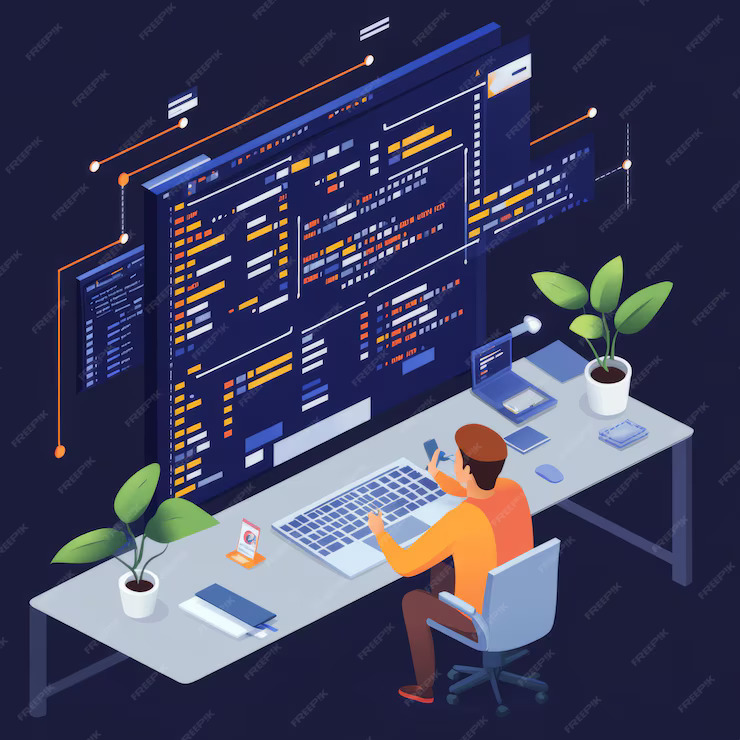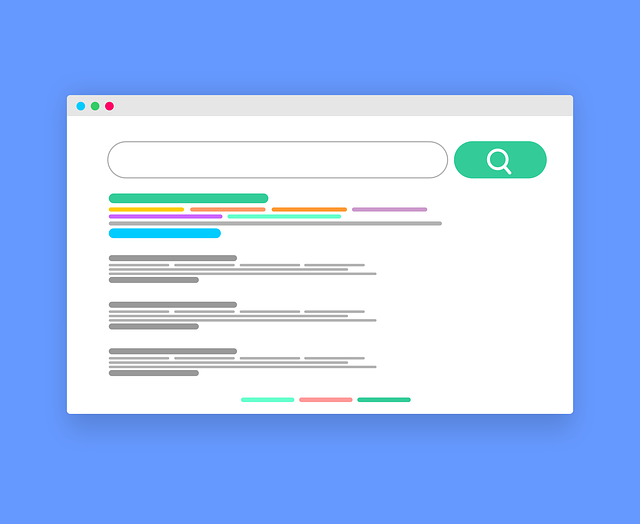An Overview of ECommerce Website Design Prices in India
The intricacy of the website, the number of features needed, and the platform are some of the variables that affect how much it costs to build an e-commerce website in India. The average cost of designing an e-commerce website in India is between ₹50,000 and ₹5,00,000 ($600 to $6,000) or more.1. Basic Ecommerce Website :
Basic E-Commerce Website A basic e-commerce website usually consists of the following pages: home, product, contact, payment gateway integration, shopping cart, and product catalog. These websites typically cost between ₹50,000 and ₹1,00,000 ($600 to $1,200).2. Intermediate Ecommerce Website :
The price goes up for companies who need more services like customer relationship management (CRM), inventory control, and SEO optimization. The cost of a middle-tier e-commerce website in India can be around ₹1,00,000 to ₹2,50,000 ($1,200 to $3,000).3. Advanced Ecommerce Website
The price can reach ₹2,50,000 to ₹5,00,000 ($3,000 to $6,000) or more for larger companies or those with specialized bespoke features like multi-vendor marketplaces, comprehensive product catalogs, numerous payment channels, and advanced security measures.Key Factors :
1. Platform Selection
Open-source platforms: Although highly configurable, platforms such as WooCommerce, Magento, or OpenCart might raise development costs because they need technical know-how to set up and maintain.Hosted platforms: In addition to the design cost, platforms like as Shopify and BigCommerce have recurring monthly costs, but they provide pre-built templates and user-friendly interfaces.
2. Number of Products
The cost is greatly influenced by the quantity of goods you intend to sell. Because a website with 50 products needs more storage, bandwidth, and possibly a larger database, it will cost less than one with 5,000 products.3. Custom Features
The price will go up if you require special features like a multi-currency option, dynamic shipping rates, an affiliate marketing system, or customized user experiences. The cost of adding custom features to your project might range from ₹50,000 to ₹2,00,000 ($600 to $2,500).4. Integration of Payment Gateways
Payment gateway integration is necessary for online transactions on the majority of e-commerce websites. Depending on the intricacy, integrating gateways like PayU, Razorpay, and CCAvenue into your website can cost anywhere from ₹10,000 to ₹50,000 ($120 to $600), even if some of them levy transaction fees.5. Responsiveness on Mobile
Having a mobile-responsive e-commerce site is essential because a large percentage of online shopping takes place on mobile devices. Although it raises the price, mobile optimization is essential in the current industry. For mobile optimization, you should budget an extra ₹15,000 to ₹50,000 ($200 to $600).Advantages of Owning an Ecommerce Website
Both small and large businesses can profit from investing in a well-designed e-commerce website.1. Expanded Consumer Outreach
Your company can reach clients far beyond geographic borders with an e-commerce website. This enables you to expand your consumer base, raise brand awareness, and access a worldwide market.2. Constant Access
You can make sales while you're asleep using an e-commerce website. Your chances of making purchases are increased because customers can peruse merchandise, place orders, and pay at any time of day.3. Reduced Operating Expenses
The overhead costs of an e-commerce business are substantially lower than those of traditional businesses. Rent, utilities, and in-store employees are not issues to be concerned about. Furthermore, digital marketing platforms like social media, PPC, and SEO are sometimes more affordable.4. Better Customer Insights
Analytics technologies provided by e-commerce platforms offer important insights into consumer behavior, product preferences, and purchasing trends. You may use this information to enhance your marketing tactics, provide individualized experiences, and make well-informed business decisions.How can I reduce the custom ecommerce website cost ?
For companies of all sizes, developing a unique e-commerce website may be a substantial financial commitment. Costs can be decreased without sacrificing quality, though, with careful preparation and wise choices.1. Make a clear plan first
Saving money on your e-commerce site can be achieved by starting with a clearly defined plan. Describe your objectives, the features you would like to see, and any modifications you require. Your project can become more focused and extraneous possibilities can be eliminated with the aid of this planning approach.2. Select an MVP (Minimum Viable Product)
Think about using an MVP strategy first. This entails releasing a rudimentary version of your e-commerce website with just the most necessary functionalities. With an MVP, you can:- Launch rapidly and begin making money.
- Concentrate on fundamental features to keep initial costs down.
- Gather user feedback for future enhancements.
3. Make Use of Pre-made Templates
Consider utilizing pre-made templates found on websites like Shopify or WooCommerce rather than spending a lot of money on a completely original design. These templates can drastically cut expenses and development time:- Templates can be purchased for free or at ₹15,000 ($180).
- It's frequently less expensive to modify an already-existing template than to start from scratch.
4. Select an Appropriate E-Commerce Platform
Costs can be significantly impacted by platform selection. Certain platforms are more affordable than others:- Although WooCommerce (on WordPress) is an open-source solution with no licensing fees, hosting and plugin costs may apply.
- Although Shopify provides easy-to-use solutions, its monthly prices range from ₹2,500 to ₹20,000 ($30 to $240).

How long does it take to develop a best e commerce website in India ?
The process of developing an e-commerce website usually involves multiple steps. The intricacy of the website, the features needed, and the effectiveness of the team working on it all affect how long each step takes.1. Research and Planning (one to two weeks)
Thorough planning and research are the initial steps in creating an e-commerce website. Understanding the objectives of the company, determining the target market, and selecting the best platform for the e-commerce site—such as WooCommerce, Shopify, Magento, or custom-built solutions—are all part of this phase.The project team will also identify the features that are required at this stage, including product pages, inventory management systems, payment gateways, and user experience components like navigation and search filters.
2. User Experience and Design (2–4 Weeks)
Making sure the e-commerce website is both aesthetically pleasing and easy to use depends heavily on the design stage. Designing the site's layout, color schemes, typography, product pages, and general appearance and feel are all included in this step. Given that a sizable amount of e-commerce traffic originates from mobile consumers, mobile responsiveness is crucial. If special user experience features, animations, or bespoke design components are needed, this step could take longer.3. Coding and Development (4–12 Weeks)
The design is brought to life through code during the development stage. Because it entails developing both the front-end and back-end functions, this stage of the e-commerce website development process is the longest. Shopping carts, payment gateways, product catalogs, and security systems are just a few of the features that developers will incorporate. The development time will go up if the website needs sophisticated features like integrated CRM, multi-vendor capability, or AI-powered product suggestions.4. Quality Control and Testing (Two to Four Weeks)
To make sure the website is operating properly after development, extensive testing is necessary. Testing entails looking for errors, problems with performance, security flaws, and user experience. To verify compatibility, this step involves testing the website across various browsers and devices.5. Deployment and Launch (one to two weeks)
The e-commerce website is prepared for launch after testing and optimization. The website will be moved from the development server to a live environment during this phase. Marketing campaigns, SEO optimization, and a soft launch are frequently conducted in conjunction with the launch to make sure everything goes as planned before the main launch.Top Ecommerce Website Development Company in India
1. Tata Consultancy Services (TCS) E-commerce Division
Location: Mumbai, with offices across India
Website : https://www.tcs.com/
2. Infosys E-commerce Solutions
Location: Bangalore
Website : https://www.infosys.com/
3. Mindtree E-commerce Division
Location: Bangalore
Website : https://www.mindtreeitsolutions.com/
4. Valuecoders
Location: Noida
Website : https://www.valuecoders.com/
5. Technoloader
Location: Ahmedabad
Website : https://www.technoloader.com/
6. Zestard Technologies
Location: Ahmedabad
Website : https://www.zestard.com/
7. Techuz InfoWeb Private Limited
Location: Ahmedabad
Website : https://www.techuz.com/
8. SynapseIndia
Location: Noida
Website : https://www.synapseindia.com/
9. Cognizant Technology Solutions India Pvt Ltd
Location: Indore
Website : https://www.cognizant.com/
10. Wipro Digital
Location: Bangalore
Website : https://www.wipro.com/digital/
People Also Ask
How much does an eCommerce website cost in India ?
For simple to mid-range sites, the price of creating an eCommerce website in India usually falls between ₹30,000 and ₹1,55,000 ($360 to $1,860). Depending on the complexity and features needed, high-end custom solutions can cost more than ₹5,00,000 ($6,000).How much should I pay for an eCommerce website ?
The price range for a basic eCommerce website with necessary functionality is ₹15,000 to ₹35,000 ($180 to $420). Costs can increase dramatically for additional goods and more sophisticated features.How much does Shopify website design cost in India ?
A Shopify website design in India typically costs between ₹15,000 and ₹3,50,000 ($180 to $4,200), depending on the quantity of products and design intricacy.How much does it cost to build a good website in India ?
The cost of creating a high-quality website for a small business in India can range from ₹12,500 to ₹90,000 ($150 to $1,080). Depending on the needs, e-commerce sites with sophisticated features might cost anywhere from ₹30,000 to several lakhs.How much does it cost to hire someone to build a website ?
Depending on the intricacy of the project and the developer's experience, hiring a professional web developer or agency can cost anywhere from ₹15,000 to ₹1,00,000 ($180–1,200) or more.How much does Wix charge for a website in India ?
For basic websites, Wix provides options starting at about ₹1,500 ($18) per year. But prices might go higher depending on extra features and premium plans, which can cost up to ₹20,000 ($240) a year for eCommerce functionality.How much is ecommerce worth in India ?
The Indian eCommerce market is expected to grow from 2023 to 2026, with a value of over $200 billion. This growth is a result of both shifting customer behavior toward online buying and rising internet penetration.How much money required for e-commerce business in India ?
The initial investment needed to launch an eCommerce business in India can range from ₹50,000 to ₹5,00,000 ($600–$6,000) or more. This covers the price of creating a website, buying inventory, advertising, and running a business.Is e-commerce business profitable in India ?
Yes, given India's quickly expanding market, the eCommerce industry there has the potential to be very profitable. Many businesses are succeeding online as a result of rising smartphone usage and internet access.How much do website designers charge in India ?
The usual price range for website designers is ₹10,000 to ₹1,00,000 ($120 to $1,200), contingent on the project's complexity and their level of experience. Rates from freelancers could be less than those from reputable agencies.For More Info :
https://createncode.com/




